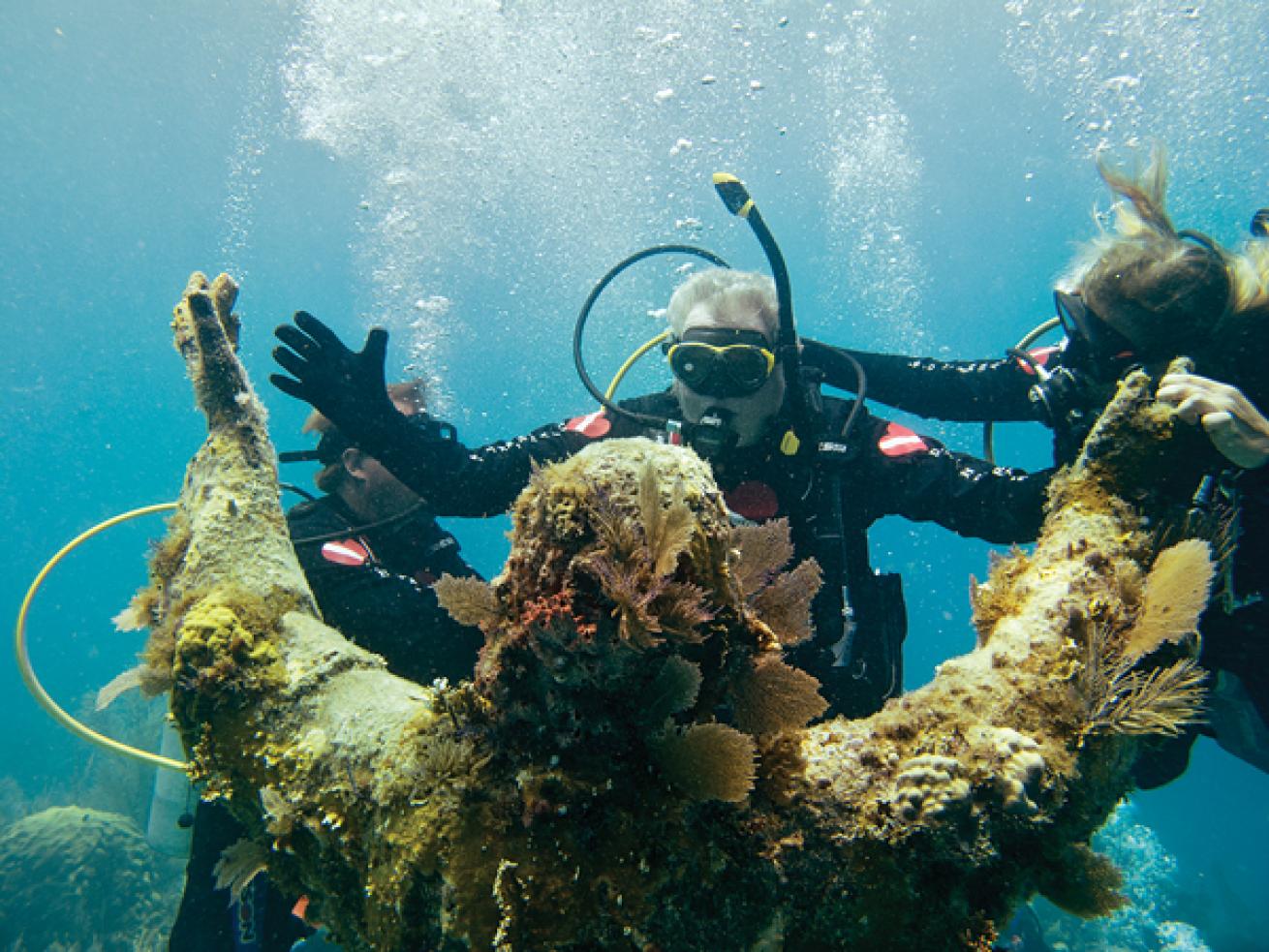Nearly Blind Diver Finally "Sees" Christ of the Abyss

Christ of the Abyss
The last time Gabriel Spataro touched the Christ of the Abyss statue was in December of 1952. It was in Chicago and it was snowing. This summer, he finally encountered it in its present home in the John Pennekamp State Park in Key Largo, Florida, more than 60 years later.
Going blind from macular degeneration, Spataro can only use his peripheral vision to see. The bronze statue is now covered with fire coral and divers are warned not to touch it, but Spataro wore gloves so he could use his hands to “see” it as much as feel.
A Korean War veteran, Spataro began diving in 1956. In early 1962 Spataro was asked to be the chairman of the Underwater Society of America’s convention in Chicago. In that position, he learned the Cressi family was making the statue — the third copy of a 9-foot-tall bronze by Italian sculptor Guido Galletti — to send to the United States. (The first two are in San Fruttuoso Bay, Italy, and St. George’s Harbor, Grenada.) The Cressi family told Spataro it was up to him to get the statue to the United States. Through family friends in the shipping industry, Spataro arranged to bring the statue to Chicago for the convention, and then eventually transport it to Florida in the winter of 1962 essentially for free.
After the statue left for Florida, Spataro never saw it again. A few years ago, after the onset of his blindness, Spataro hooked up with Diveheart, a nonprofit organization dedicated to helping people with disabilities experience the underwater world. At the time, he was depressed over losing his sight, but diving again helped him regain his spirit and enthusiasm.
After telling Diveheart president and founder Jim Elliot the story of his connection to the Christ of the Abyss statue, Spataro decided he wanted to dive it. With the help of two adaptive buddy divers, Spataro spent about 20 minutes touching the statue, feeling its head and holding its hands, an emotional day for everyone who treaures the Pennekamp icon.

The last time Gabriel Spataro touched the Christ of the Abyss statue was in December of 1952. It was in Chicago and it was snowing. This summer, he finally encountered it in its present home in the John Pennekamp State Park in Key Largo, Florida, more than 60 years later.
Going blind from macular degeneration, Spataro can only use his peripheral vision to see. The bronze statue is now covered with fire coral and divers are warned not to touch it, but Spataro wore gloves so he could use his hands to “see” it as much as feel.
A Korean War veteran, Spataro began diving in 1956. In early 1962 Spataro was asked to be the chairman of the Underwater Society of America’s convention in Chicago. In that position, he learned the Cressi family was making the statue — the third copy of a 9-foot-tall bronze by Italian sculptor Guido Galletti — to send to the United States. (The first two are in San Fruttuoso Bay, Italy, and St. George’s Harbor, Grenada.) The Cressi family told Spataro it was up to him to get the statue to the United States. Through family friends in the shipping industry, Spataro arranged to bring the statue to Chicago for the convention, and then eventually transport it to Florida in the winter of 1962 essentially for free.
After the statue left for Florida, Spataro never saw it again. A few years ago, after the onset of his blindness, Spataro hooked up with Diveheart, a nonprofit organization dedicated to helping people with disabilities experience the underwater world. At the time, he was depressed over losing his sight, but diving again helped him regain his spirit and enthusiasm.
After telling Diveheart president and founder Jim Elliot the story of his connection to the Christ of the Abyss statue, Spataro decided he wanted to dive it. With the help of two adaptive buddy divers, Spataro spent about 20 minutes touching the statue, feeling its head and holding its hands, an emotional day for everyone who treaures the Pennekamp icon.










